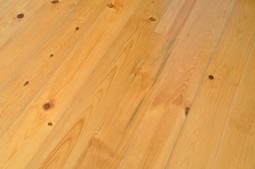
The spring season approaching makes March the best month to incorporate fresh designs into your home. You may already be on the hunt for some innovative renovation ideas that are not only good for your home, but for the environment, too. If you are considering making some eco-friendly home improvements but aren’t sure where to start, Patricia Kelly, a Morganville, NJ interior decorator offers up her advice.
- Bamboo Flooring. This type of flooring material is made from the bamboo plant and offers extremely similar properties to true hardwood flooring. Bamboo offers strength, durability and natural resistance to insects and moisture, making it a desirable option for flooring. Bamboo is an eco-friendly alternative to traditional hardwood flooring because it is a grass, meaning it grows much faster than wood.
- Terrazzo Countertops. If you are looking for a unique eco-friendly countertop for your kitchen, terrazzo is a beautiful and durable option. Terrazzo is made up of recycled crushed glass that is fastened together using one of two base options: cement or resin. If you opt for cement-based terrazzo, you will need to apply a sealer to protect it from staining. The resin base doesn’t require a sealer, but is the more costly option.
- Low-flow Shower Head. While standard flow showerheads produce about 6 gallons of water per minute (GPM), low-flow showerheads produce only about 2.5 GPM. A low-flow showerhead can decrease your water consumption by 40% or even more. Low-flow showerheads are not only eco-friendly by conserving water, but they can also reduce your water bill.
- Composite Decking. A composite deck is made up of wood waste along with recycled plastic, which means the material will reduce the amount of waste sitting in a landfill. Composite decking provides a durable, long-lasting splinter-free and slip-resistant experience and requires low maintenance. Unlike wood decking, composite decking is naturally resistant to decay, mold, and insects.
- Non-toxic Paint.Traditional paint releases low level toxic emissions into the air even years after application. The cause of these emissions are from VOCs (volatile organic compounds), which have become a standard ingredient in paint to help its performance. VOCs have been linked to a series of health problems, including asthma, headaches, and watery eyes. Many painting companies, like Gloucester home painters, are opting for the low-VOC or no-VOC paint options in an effort to be more eco-friendly.
Follow these tips and tricks for incorporating eco-friendly upgrades into your home!
